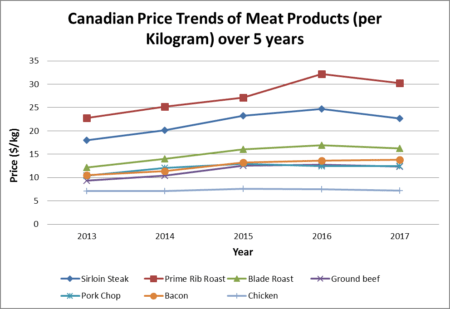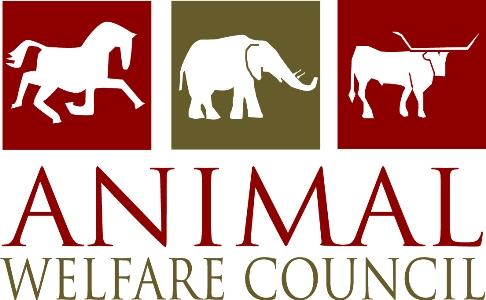By Claire Williams,
Animal and Poultry Science Student, University of Saskatchewan
Despite the constant confusion, there is a difference between animal rights and animal welfare. Although these two terms are often used interchangeably, it is important to clarify the difference before I continue. Animal rights, the term commonly associated with People for the Ethical Treatment of Animals (PETA), is described by the Animal Welfare Council (AWC) as a “philosophical view” in which animals are seen as humans. In this sense, animals are entitled to the same kind of legislation as us, and therefore should not be used in any aspect that may serve humanity (i.e. entertainment, meat, or pets). Compare this explanation to the AWC’s definition of animal welfare, deemed a “human responsibility”, which ensures the creature’s life is of the highest quality. With animal welfare, animals are still utilized for entertainment, meat, and as pets, but are given proper care, in accordance with the five freedoms of animal welfare. These freedoms are as follows: freedom from hunger/thirst, discomfort, pain/injury/disease, fear/distress, and freedom to express natural behaviour. Neither belief is incorrect or better; they are simply preferences. For the purposes of this discussion, however, I will be speaking in terms of welfare, given its role in the growing popularity of humane certification.
Changing perceptions, changing price
In early May, Ellen Goddard, Professor of economics of agriculture food and agribusiness at the University of Alberta, wrote an article for The Globe and Mail emphasising the upcoming economic changes from moving towards humane meat supply. The most common examples of humane certifications in a corporate setting are in businesses such as Sobeys, Whole Foods, and, as expanded upon by Barbara Duckworth in The Western Producer, Costco. Part of the reason such companies come to mind is due to prominent advertising within the store, as it is mainly used in an attempt to reassure consumers about the quality of the animal’s life. Goddard develops this in her article, mentioning that consumers are often willing to pay a premium for meat known to reduce the guilt associated with such a purchase.
However, this price increase is not simply for the sake of increasing profits. As discussed by both Duckworth and Goddard, producers who opt for certification face greater costs due to third party intervention to ensure the increased requirements set out by organisations and programs such as the Animal Welfare Foundation of Canada (AWFC) and the National Pork Quality Assurance Program. This is not to say traditional farming is unethical; certification simply requires different minimums. For example, to gain humane certification, a producer must adhere to increasing pen size and switching to feed made from plants without genetic modification. Consequently, a producer is also subject to yearly inspections to ensure their practices follow the appropriate standards, resulting in increased costs. While such a price increase may seem necessary to producers and worth it to some consumers, others may be less inclined to pay, especially given the price trends of meat that consumers have faced over the past few years.

Source: Statistics Canada, CANSIM, table 326-0012 and Catalogue no. 62-001-X.
Meat prices have just begun to decline, after a four-year upward trend. With the growing importance of animal welfare to consumers, the decline in the price of meat is unlikely to continue. Upon seeing the willingness – and in some cases, preference – of consumers to pay premiums for meat that has been extensively handled and cared for, farmers may be more inclined to adopt said practices or improve upon methods already used. As a result, meat prices are likely to increase to compensate for the additional costs of production.
While the main emphasis placed on most articles is in the beef industry, pork is also of strong consideration, given its $13.1 billion in annual contribution to Canada’s economy. This role is not lost on distributors, either, as this September marks the second year of DuBreton’s $30 million three-year investment to encourage the certification of humane pork. While the demand for humane meat continues to increase, current production levels struggle to meet standards. Therefore, if more corporations adopt a similar program to DuBreton, companies can keep the source of what consumers purchase within our borders and incentivise the adoption of Animal certification. In this sense, meat production in Canada has the potential to thrive not only as a leader in improved meat conditions but also in the creation of jobs to rebuild our economy.
What does this mean for Canada?
Agriculture thrives entirely on the relationship between producers and consumers. As a result, producers may not see a change in price as enough of a reason to change their farming practices which have been successful for years. Earls’ misstep in 2016 (which has since been amended) caused us to ask ourselves: “If forced to choose, is Canadian meat or certified humane meat more important?” In an ideal world, we would not have to weigh them against one another, but the controversy sparked conversations about how to ensure Canadian companies use Canadian meat that meets consumer demands of animal welfare.
Commonly, economics revolves around the saying “there’s no such thing as a free lunch” and, in this case, with a greater standard of acceptability, comes a greater cost and a subsequent higher price. Humane certification, while not impossible, is going to take time to implement. Similarly, if we are dedicated to Canadian meat production (as we should be), consumers and producers, alike, should be flexible to the idea of oncoming change. Whether or not we accept and like change, the policies surrounding humane certification in Canada have the potential to aid our economy.


